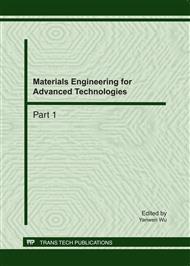[1]
H.G. G Wood, J.A. Peterka and J.E. Cermak. Wind Tunnel Measurement in the Wakes of Structures. NASA-CR-2806, N7719716, (1977).
Google Scholar
[2]
J.A. Peterka and J.E. Cermak. Turbulence in Building Wakes. Proceedings of the 4th International Conference on Wind Effects on Buildings and Structures. Cambridge University press, (1977).
Google Scholar
[3]
D.A. Paterson. Computational of Wind Flows over Three-dimensional Buildings. PHD Thiese, University of Queensland , Brisbane, (1986).
Google Scholar
[4]
D.A. Paterson. and C.J. Apelt. Computational of Wind Flows around Three-dimensional Buildings. Building and Environment, Vol24 (1989).
DOI: 10.1016/0360-1323(89)90015-2
Google Scholar
[5]
D.A. Paterson. and C.J. Apelt. Simulation of Wind mputational of Wind Flows over Three-dimensional Buildings.J. Wind Eng. Ind. Aerodyn. 193-213, (1986).
DOI: 10.1016/0167-6105(86)90022-x
Google Scholar
[6]
Q.Y. Chen and J. Srebric. Application of CFD Tools for Indoor and Outdoor Environment Design. International Journal on Architectural Science, Vol1(2000) , p.14.
Google Scholar
[7]
Information on http: /www. Google. com. hk Table 1 Wind speed and direction statistics results at Xiamen Professional Meteorological Observatory Table 2 Wind speed and direction statistics results at Longhai Meteorology Bureau Table 3 Test results of different wind speed sampling methods at Xiamen Professional Meteorological Observatory Table 4 Test results of different wind speed sampling methods at Longhai Meteorology Bureau Table 5 Test conclusion of wind speed extreme value distribution at bridge site Table 6 Basic wind speed (m/s) 10m high of Xiamen Professional Meteorological Observatory Table 7 Longhai City Bureau of Meteorology basic wind speed of 10 meters height (m/s).
DOI: 10.7717/peerj.14194/table-5
Google Scholar


